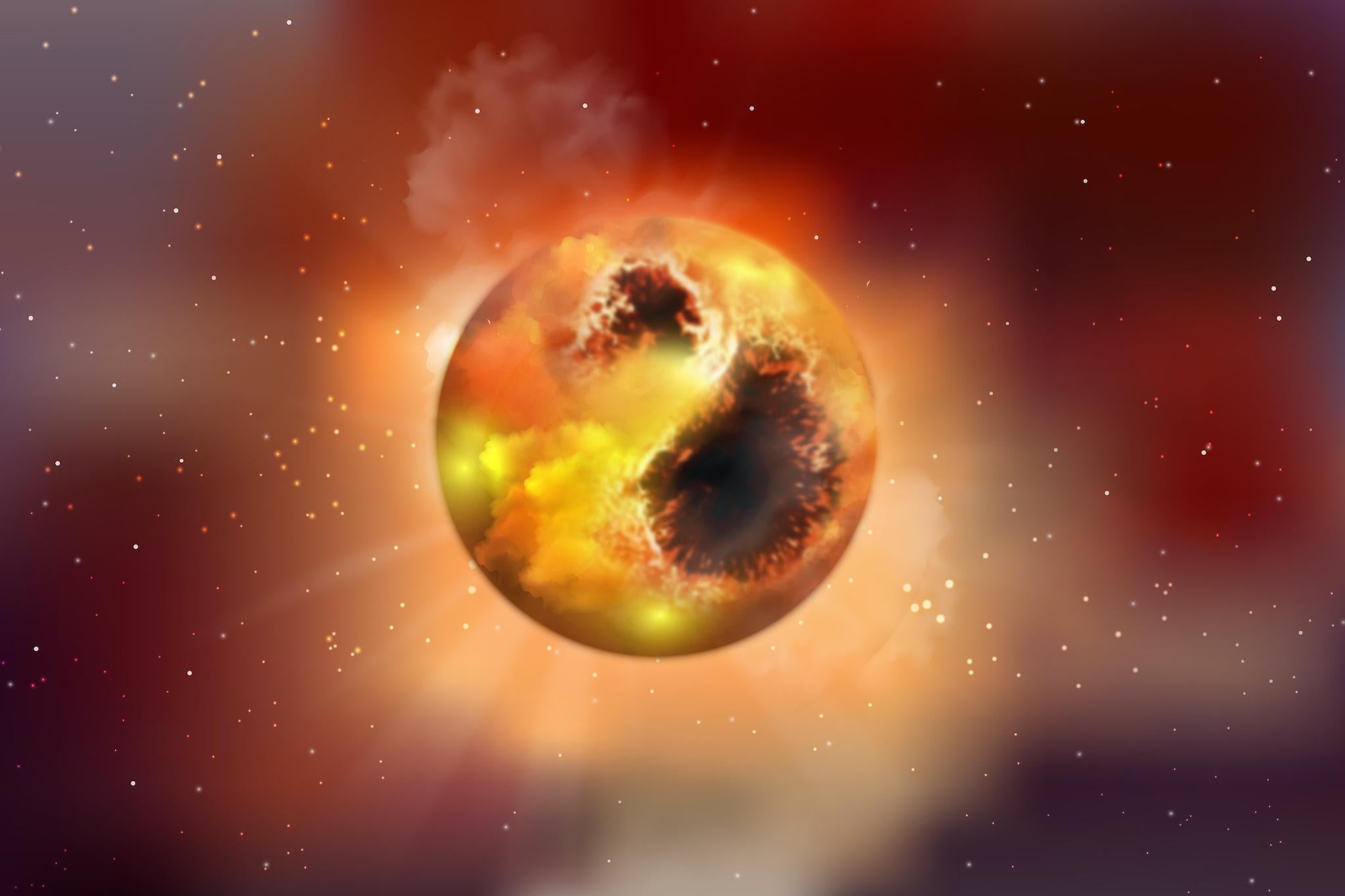Betelgeuse: 'Large spots' explain star's recent unusual behaviour, scientists say

The recent unusual behaviour of the star Betelgeuse could finally have been explained, after new work by astronomers.
The star has been dimming strangely in recent months, with scientists speculating that it could be about to explode into a supernova or was otherwise being subject to an unknown process.
Now new research has shown that the most likely explanation of the dimming is large star spots on Betelgeuse's surface, which have caused it to dim.
Betelgeuse is usually one of the brightest stars in the night sky, easily visible with the naked eye. But in recent months astronomers had noticed that it appeared to have got much dimmer, very quickly, dropping to about 40 per cent of its usual luminosity in the period between October 2019 and April 2020.
Some suggested that the star was dimming because it was about to explode into a supernova, prompting excitement that the process could be observed from Earth. Others suggested that dust could be moving in front of the star, and blocking out its light from us.
Now it appears that drop is the result of temperature variations on the luminous surface of the star. There are probably huge cool spots on the star, which cover up to 70 per cent of its surface, astronomers now say.
Betelgeuse, a relatively mature star, is a red giant: it is about 20 times more massive and 1,000 times larger than our Sun. If it were swapped for our Sun, it would reach almost to Jupiter.
“Towards the end of their lives, stars become red giants,” said Thavisha Dharmawardena from the Max Planck Institute for Astronomy, who led the study, in a statement. “As their fuel supply runs out, the processes change by which the stars release energy. As a result, they bloat, become unstable and pulsate with periods of hundreds or even thousands of days, which we see as a fluctuation in brightness."
Scientists tested the idea that the dimming could be caused by dust by looking through data taken from telescopes that measure light from the star at a specific wavelength, which is a thousand times greater than that of visible light. Normally, cool dust would glow at this wavelength – but seen through those telescopes, Betelgeuse was 20 per cent darker.
Taken together with the reduction in visible light, the scientists suggest that the behaviour is most compatible with a change in temperature on the surface of the star.
Star spots are fairly common on huge stars, and a version of them can even be seen on our own sun, but they are not usually visible at quite such a scale. However, scientists say that the dramatic nature of Betelgeuse's spots is in line with theoretical models of such stars' behaviour.
Astronomers now hope to keep watching the star, and to understand whether it experiences a spot cycle that goes around on a predictable cycle, like our own Sun.
The new paper, 'Betelgeuse Fainter in the Submillimeter Too: An Analysis of JCMT and APEX Monitoring During the Recent Optical Minimum', is published in Astrophysical Journal Letters.
Join our commenting forum
Join thought-provoking conversations, follow other Independent readers and see their replies
0Comments